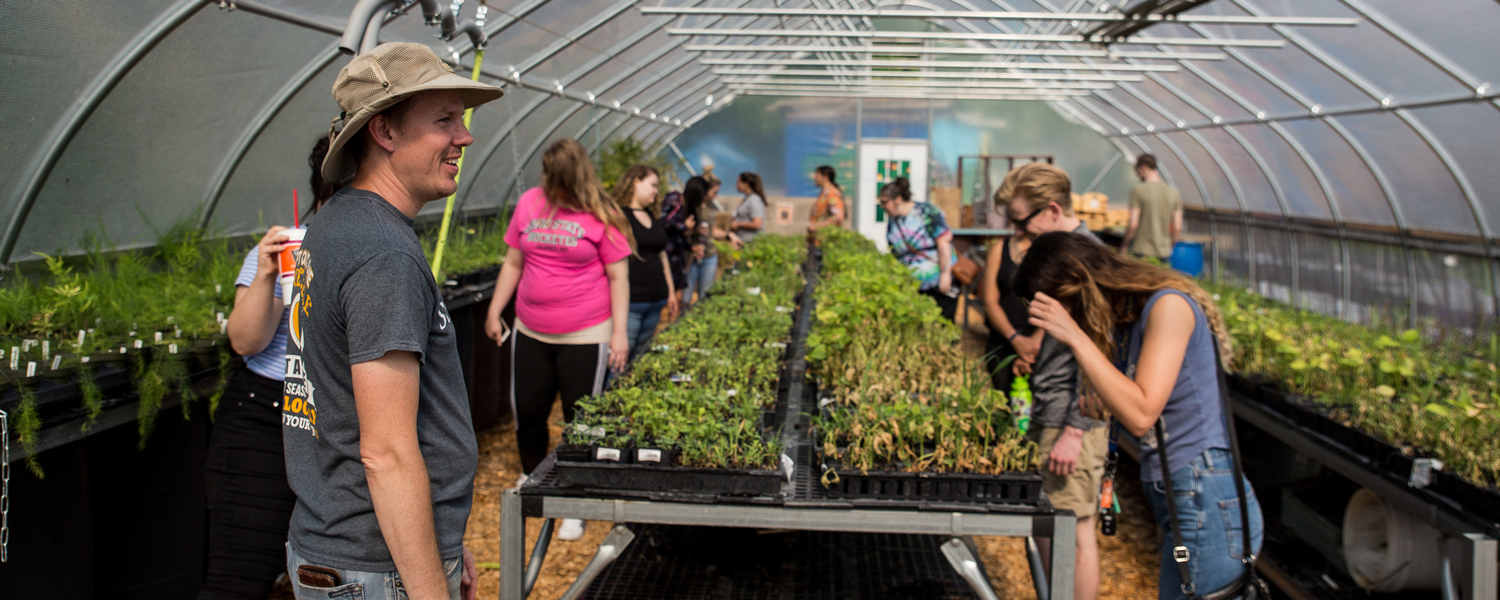Campus leads county in undergraduate research and innovation.
Carefully watering the garden, Kristy Doering knew what was just beneath the soil would take some time to grow. Seeds she once held in the palm of her hand would yield 50 pounds of fresh produce to feed Stark County’s food insecure.
While she always could imagine with certainty the plants producing vegetables, she was encouraged to take a chance on researching how a local, small-scale campus gardening project could make a big impact.
“There’s a lot of need in this region that I think people are unaware of,” said the 2018 graduate of Kent State University at Stark. “It was really eye-opening to document the amount of people without access to food and how we can change that for our community.”
Everyday research becomes life-changing discoveries at Kent State Stark, where students, like Doering, work alongside renowned faculty members – with research recognized nationally by The Washington Post, CNN and PBS. From studying social media habits to the business applications of virtual reality to top nursing techniques, students get practical experience with faculty experts.
They perform cancer research in the classroom of Professor P. Bagavandoss, Ph.D., where students are using phytochemicals to inhibit ovarian cancer cell growth. While Professor Matthew Lehnert, Ph.D., and his students publish original academic research documenting the way insects ingest fluids as a model for targeted delivery of disease-fighting drugs.
Other undergraduate researchers have worked alongside their professors to restore Sippo Lake’s 4.3-acre Cottonwood Wetland and even discover a new species of crab that swam the world’s seas 95 million years ago.
“The caliber of the research we do exemplifies the fact that we are Kent State University, a large research institution with world-class faculty and state-of-the-art facilities, located right here in Stark County,” said Dean Denise A. Seachrist, Ph.D. “We provide the immeasurable value of an affordable, quality education where students can live, work and give back to their community.”
‘CREATING THE SOLUTIONS’
Before Doering graduated from Kent State Stark in December, she served with AmeriCorps VISTA at StarkFresh, a not-for-profit group that operates a mobile grocery market and encourages urban farming. Her work was about more than peddling vegetables; for Doering, it was finding new ways to feed the hungry.
These days, the professor who encouraged her to research food insecurity gives his students a firsthand glimpse of the greenhouses along Rowland Avenue NE in downtown Canton. In the city block once known for its “Turtle Park”, peppers, garlic and eggplant grow in rows to feed pockets of the community who have little access to fresh produce.
“It is extremely important for students to see this,” said Professor Chris Post, Ph.D., who worked with Doering and other students in the Environmental Studies program, one of more than 20 bachelor’s degrees offered entirely at Kent State Stark. “Like with every teaching opportunity, you trust students will go on to do exponentially bigger things.”
Tom Phillips, executive director of StarkFresh, recently welcomed Post’s summer class to the Canton facility.
“This hands-on learning experience can guide students toward their passion. It ignites something within them: How can I help? How do I help my community?,” Phillips said. “Together, the faculty and students at Kent State Stark are creating the solutions Stark County needs through research, collaboration and innovation.”
‘TOMORROW’S IDEAS TODAY’
A primary goal of Kent State is to engage the communities in which its eight campuses are located to fuel research, foster partnerships and economic development.
“As the county’s public university, our role is to transform the community and to transform lives. We are impacting the future and helping to better Stark County,” Seachrist said. “We are the incubator for tomorrow’s ideas today.”
And for Doering, now raising her own children, she understands the seeds we sow today can change the course of a life.
“It has changed mine.”
RESEARCH DRIVEN, CLOSE-KNIT CAMPUS
With a student-to-faculty ratio of 17:1, Kent State University at Stark students have the opportunity to obtain a Kent State University degree at a regional-campus rate while taking courses taught by professors who know them by name. That is one reason why 92 percent of seniors report in the National Survey of Student Engagement (NSSE) that they would choose the campus all over again.
To find out more about the many research opportunities and academic programs at Kent State University at Stark, visit www.kent.edu/stark or follow the university on social media @KentStateStark.
Special to The Canton Repository appearing on June 30, 2019.
Melissa Griffy Seeton is the coordinator for public relations and media communications at Kent State University at Stark.
